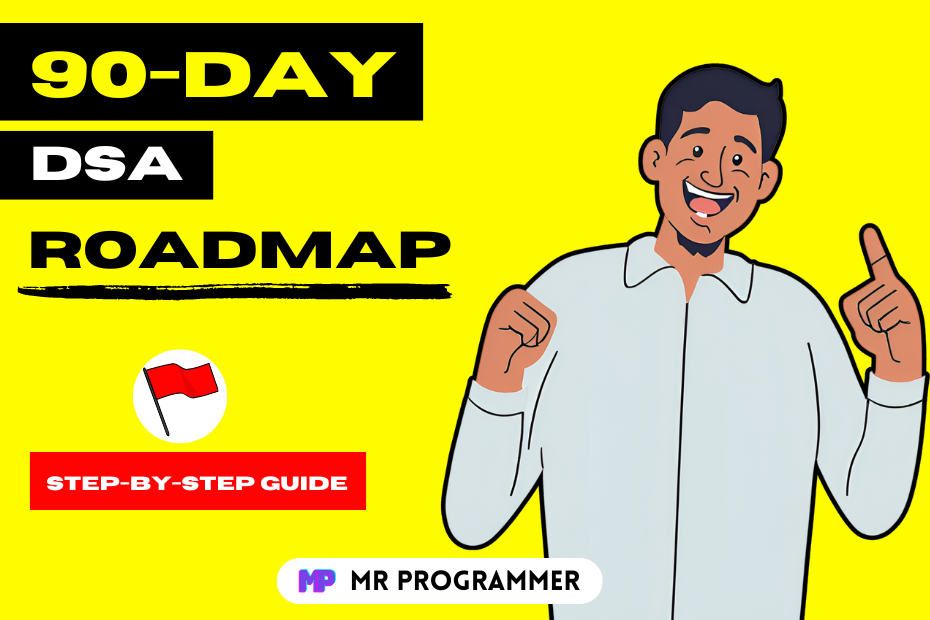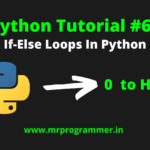If you’re here, you’re probably ready to take your coding skills to the next level. Data Structure and Algorithms (DSA), you’ve come to the right place. Whether you’re gearing up for a coding interview or simply aiming to sharpen your programming skills, the 90-day dsa roadmap will guide you at every step.
Why DSA Matters?
Before diving into the roadmap, you should take a moment and understand why DSA is so crucial. Data Structures and Algorithms are the foundation of computer science. Mastering them prepares you for technical interviews and enhances your problem-solving abilities, making you a more efficient and effective coder.
Also Read: Data Structures and Algorithms (DSA Tutorial)
Table of Contents
Your 90-Day DSA Roadmap For Mastery
Here’s a comprehensive 90-day plan that will take you from DSA beginner to expert. This guide is divided into weeks and days, focusing on different aspects of DSA to progressively build your skills.
Week 1-2: Building the Foundations
Day 1-3: Understanding Data Structures
Data Structures are like containers for data, each designed to handle specific kinds of problems. We’ll explore what data structures are and why they’re essential for efficient coding. Expect to get familiar with arrays, the simplest form of data structure, and understand their role in programming.
Day 4-7: Diving into Arrays
Arrays are your first data structure. Learn how to perform key operations such as insertion, deletion, and transversal. We’ll also cover common array problems and practice exercises to solidify your knowledge.
Day 8-10: Exploring Strings
Strings are everywhere in programming. We’ll look at how to manipulate strings and tackle common string-related problems. Get ready to dive into operations like concatenation, searching, and pattern matching.
Day 11-14: Getting to Know Linked Lists
Linked lists are more dynamic than arrays. We’ll cover singly linked lists, doubly linked lists, and circular linked lists. Learn the fundamental operations and work through problems to grasp this data structure well.
Week 3-4: Advancing Your Knowledge
Day 15-18: Mastering Stacks
Stacks are essential for tasks that require Last In, First Out (LIFO) operations. We’ll explore stack operations and their applications in real-world problems. You’ll have plenty of problems to practice and strengthen your understanding.
Day 19-22: Understanding Queues
Queues operate on a First In, First Out (FIFO) principle. We’ll cover different types of queues, including circular queues and priority queues. Learn the operations and solve problems to see how queues work in various scenarios.
Day 23-26: Learning About Trees
Trees are hierarchical structures used to represent relationships. We’ll start with the basics of binary trees and binary search trees, then move on to tree traversal techniques. This section will include practice problems to help you get comfortable with trees.
Day 27-30: Exploring Graphs
Graphs are used to model complex relationships. We’ll explore different graph representations and transversal algorithms like Breadth-First Search (BFS) and Depth-First Search (DFS). Solve problems to get a good handle on graph theory.
Week 5-6: Delving into Algorithms
Day 31-34: Learning Sorting Algorithms
Sorting Algorithms are a fundamental concept in programming, We’ll cover various sorting techniques including Bubble Sort, Merge Sort, and Quick Sort. Understand their time complexities and practice sorting problems to become proficient.
Day 35-38: Exploring Searching Algorithms
Searching algorithms are crucial for finding data efficiently. We’ll look at Linear Search and Binary Search, and learn how to apply these techniques to different types of data structures. Practice problems will help you master these algorithms.
Day 39-42: Understanding Recursion
Recursion is a powerful technique where functions call themselves to solve problems. We’ll cover the basics of recursion and solve classic recursive problems to understand when and how to use this approach.
Day 43-45: Getting to Know Hashing
Hashing is a technique that transforms data into a defined-size table. We’ll explore hash functions and collision resolution techniques. Work through problems to see how hashing can be used to solve various challenges.
Week 7-8: Mastering Advanced Algorithms
Day 46-49: Diving into Dynamic Programming
Dynamic Programming (DP) is a technique for solving problems by breaking them down into simpler subproblems. We’ll cover the basics of DP, including memorization and tabulation, and work on problems to master this technique.
Day 50-53: Exploring Greedy Algorithms
Greedy algorithms make the best choice at each step to achieve an optimal solution. We’ll cover the basics of greedy algorithms and solve problems to see how this approach can be used effectively.
Day 54-57: Understanding Backtracking
Backtracking is a method for finding solutions by exploring all possibilities. We’ll cover the basics of backtracking and work on problems to understand how to use this technique to solve complex problems.
Day 58-60: Mastering Divide and Conquer
Divide and Conquer is a strategy for solving problems by breaking them into smaller subproblems. We’ll explore this approach and work on problems to see how it can be applied to various scenarios.
Week 9-10: Analyzing Complexity
Day 61-63: Time Complexity
Understanding how algorithms perform is key to becoming a better programmer. We’ll cover Big O notation and analyze the time complexity of different algorithms. Practice problems will help you understand performance analysis.
Day 64-66: Space Complexity
Space complexity determines the amount of memory required by an algorithm. We’ll cover Big O notation for space and analyze space complexity in various scenarios. Practice problems will reinforce your understanding of space efficiency.
Day 67-70: Trade-Offs and Optimization
Optimization is about balancing time and space efficiency. We’ll explore trade-offs and techniques for improving algorithm performance. Practice problems will help you apply these concepts.
Week 11-12: Practicing and Applying Your Knowledge
Day 71-77: Problem-Solving Practice
Get started by applying everything you’ve studied! Work on challenges on websites such as LeetCode, HackerRank, and CodeSignal. Focus on a variety of topics each day to cover all aspects of DSA.
Day 78-84: Conducting Mock Interviews
Stimulate real interview scenarios with mock interviews. Analyze your performance, identify weaknesses, and work on improving your skills. This will prepare you for the real interview experience.
Day 85-88: Reviewing and Revising
Review all the concepts and problems you’ve worked on. Revise areas where you feel less confident and prepare for any final challenges.
Day 89-90: Final Assessment
Take a comprehensive test covering all topics from the past 90 days. Evaluate your performance and create a plan for continued learning and improvement.
Conclusion
Congratulations on completing your 90-day DSA Roadmap Journey. By following this guide, you’ve built a strong foundation in Data Structures and Algorithms. Keep practicing, stay curious, and continue exploring new challenges. The journey doesn’t end here – there’s a lot more to learn and discover in the world of programming.
- Introduction to Entrepreneurship: Everything You Need to Know Before You Start - June 12, 2025
- What Sets Artificial Intelligence Apart from Humans? - April 18, 2025
- Python Programming: A Comprehensive Guide for Beginners - March 27, 2025








